In cognitive psychology there’s a term—teleological. It means that human beings are goal-orientated. Human beings need a goal. The goal can be as simple as getting up in the morning or as ambitious as climbing Mount Everest. Goals are critical because, as we explain in our education, goals create three things: energy, awareness and creativity. Lack of focus in organizational direction often comes down to goal setting. Specifically—the what, why, how and who of goal setting. You’ll struggle to achieve goals if your people are not clear on what they’re trying to achieve, don’t buy in to why you’ve set a goal, can’t tell how they’ve achieved the goal and don’t know who is accountable for the goal.
Four-Point Goal Framework
Using what, why, how and who provides a four-point framework for goal-setting. Along with applying a few cognitive psychology principles (such as teleological), the framework can help you take your organizational or divisional goal achievement to a higher, more consistent level. Use the vertical “I am IN” column to help ensure your people are buying in to your goals. Use the “I am NOT in” column to better understand why people are not buying in.
#1 What
First, do your people clearly understand the goal or direction? It has been my experience that leaders think they are being clear, especially after repeated communication. However, you would be surprised at how many people really don’t understand the goal. Taking the time to ensure your people see the same picture as you is critical. It is not only important that they hear or read it, it is essential that they “see” it. An important concept in goal-setting comes from gestalt psychology. Simply defined, gestalt means that human beings are always searching for order. Once we settle on an order (i.e., this is the way it is “supposed” to be) our natural tendency is to work hard to maintain that order. That is why it is important for leaders to know how to throw their people out of order. Goals and goal setting are intended to throw you out of order. A key part of goal setting is to create a strong enough picture so that the new goal (or picture) is stronger than the old goal. Human beings move towards the most dominant picture. Golfers who think “water” generally get water. As a leader, your challenge is to ensure the direction or goal you want to achieve is a stronger picture than the old picture. You want people to think “fairway,” not “water.” If your people are clear on the goal, it is a lot easier for them to follow or contribute to goal achievement. Clearly understanding the goal or direction, the “what”, unleashes awareness.
#2 Why
Second, once your people understand and can “see” the goal, the next step is to ensure they have a clear, compelling reason to put their effort into achieving the goal. The challenge for leaders is not to try to motivate people with your “why”, but to motivate them with their “why”; that is, motivate them with what truly matters to them. If you have competing “whys” and theirs is stronger, you’ll struggle to create the energy needed to achieve the goal. Another common mistake is to set a new goal, but have the compensation system continue to reward the old goal. This gives people a positive consequence for remaining the same. Creating a compelling “why” for the new goal along with a positive consequence creates energy. As we stress in our education, those with a strong enough “why” can achieve almost any “what”.
#3 How
Third, and of equal importance to the first two steps, leaders need to establish and communicate measurements of success. For example, your goal could be to complete a specific project; your measurement of success could be to complete the project within a specific time frame. So, if you complete the project but miss the time frame, you and your staff would know the goal was not achieved because the measurement of success was not achieved. Clarity of the goal is critical, but so is the measurement of success—“how” you will achieve the goal. Also critical is the feedback you give to your people on measurements of success or improvement. Your people need feedback. They need to know when they are on target and when they are off target. The quicker and more specific the feedback, the better chance they have to move toward the successful achievement of the goal. A clear understanding of the “how” creates motivation to work to achieve the goal.
#4 Who
Fourth, in psychology there is a term called “locus of control”. In goal setting and achievement, this means you (as well as individual staff) need to ask yourself, “Is it inside my control or outside my control?” My teacher and mentor, Lou Tice, would describe this with a simple quote: “If it is to be, it is up to me.” Creating this sense of accountability is one of the strongest outcomes of The Pacific Institute®’s education. In goal setting, having a group of people take accountability (“who”) comes from their understanding of the goal (“what”), having a clear and compelling reason to support the goal (“why”) and lastly, having a clear understanding of the measurements of success (“how”). To get your people to “I am IN” on your goals, you need to put all four steps into action—what, why, how and who. Check out The Pacific Institute® Canada website to learn more about The Pacific Institute® education and transformational processes.
Featured posts
May 16, 2023
May 16, 2023
May 16, 2023





